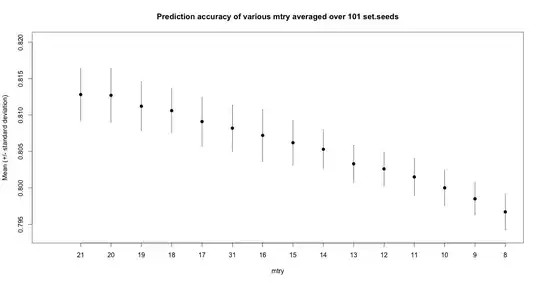So I'm using random forest regression to predict on some data and I usually go with 25 or 50 trees and 50 random features. Currently I have only one data set to care about, but in the future more will come for which I have to create new models, eventually so many it will be difficult to tune the parameters by hand.
So I thought about writing a program that tries out different parameter following a specific scheme. For example, if the results for params 50/50 are not so great, try again with 40/50, then 60/50, then 50/40 etc. Just an idea. But a Ph.D. in ML told me that this effort is in vain as the parameters only slightly influence random forest, as it is very stable. Can you confirm this?
I've read through this Question & Answers and I can confirm the variance reduction with my 25/50 vs. 50/50 approach, but it still doesn't really answers my question. Help is apprechiated :-)
